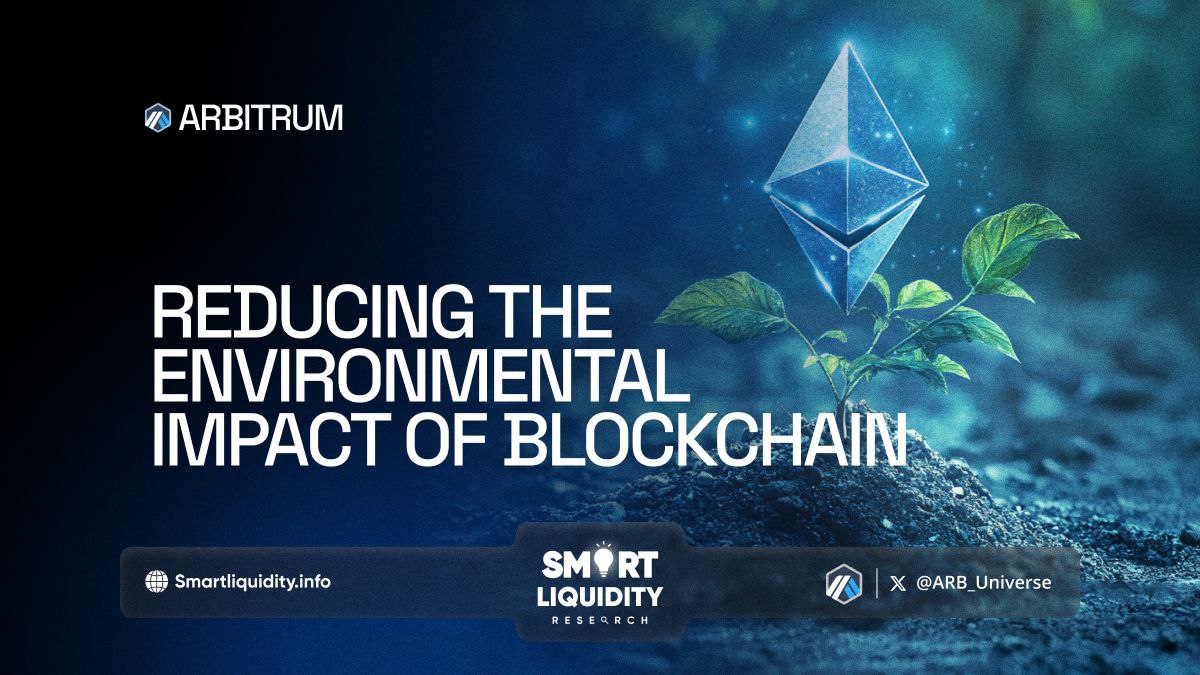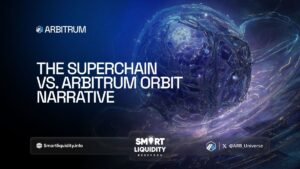Reducing the Environmental Impact of Blockchain: How Arbitrum is Leading the Way


Reducing the Environmental Impact of Blockchain: How Arbitrum is Leading the Way! Blockchain technology has revolutionized industries with its decentralized, secure, and transparent system of transactions. However, one major criticism has persisted: the environmental impact of blockchain, particularly when it comes to energy consumption.
As the demand for decentralized finance (DeFi) and cryptocurrencies continues to grow, finding sustainable blockchain solutions becomes critical. Arbitrum, a Layer 2 scaling solution for Ethereum, is at the forefront of reducing blockchain’s environmental footprint, making strides in eco-friendly innovations.
The Problem: Energy Consumption of Traditional Blockchains
Blockchains like Bitcoin and Ethereum operate using a consensus mechanism called Proof of Work (PoW). PoW requires miners to solve complex cryptographic puzzles to validate transactions, which requires enormous amounts of computational power. This translates to high energy consumption, with Bitcoin alone consuming more energy annually than many countries. As awareness of the climate crisis grows, the blockchain industry has been scrutinized for its environmental impact.
Ethereum’s transition to Proof of Stake (PoS) with Ethereum 2.0 aims to tackle this issue by reducing energy consumption by approximately 99%. But even with PoS, the sheer volume of transactions on the Ethereum network poses a scalability challenge, leading to high gas fees and energy inefficiency. This is where Layer 2 solutions like Arbitrum come in.
How Arbitrum Reduces Environmental Impact
Arbitrum is a Layer 2 scaling solution built on Ethereum that offloads much of the transaction processing from the Ethereum mainnet. It leverages rollups—a technology that batches transactions together before sending them to Ethereum for finalization. This process significantly reduces the amount of data that needs to be processed by the Ethereum network, thereby decreasing energy consumption.
Here’s how Arbitrum’s Layer 2 solution makes blockchain more eco-friendly:
- Increased Transaction Efficiency
By batching transactions off-chain and sending compressed data to Ethereum, Arbitrum drastically reduces the computational work required. This not only lowers gas fees for users but also minimizes the network’s energy use, as fewer computational resources are needed per transaction. - Decreased Carbon Footprint
With fewer operations being performed on Ethereum’s mainnet, the overall carbon footprint of each transaction is lowered. As Layer 2 solutions like Arbitrum scale, they have the potential to serve millions of users while keeping energy usage in check. - Supporting the Move to Proof of Stake
While Ethereum’s move to PoS marks a huge leap in reducing energy consumption, Arbitrum complements this shift by addressing transaction throughput. Even with PoS, Ethereum would still face energy inefficiency if not for scaling solutions like Arbitrum.
Why Sustainability Matters in Blockchain
In a world where companies and institutions are held accountable for their environmental impact, the sustainability of blockchain is a growing concern. Blockchain adoption will be critical for industries like supply chain management, healthcare, and finance. But without sustainable practices, the very technology that promises to decentralize and democratize these industries may also contribute to ecological degradation.
Arbitrum’s innovations help ensure that the future of blockchain is greener and more scalable, fostering widespread adoption without compromising on environmental responsibilities.
The Future: Sustainable Growth of Decentralized Technologies
As blockchain technology matures, sustainability will remain a key focus for developers, users, and investors alike. Arbitrum’s efforts to reduce the environmental impact of blockchain transactions set an example for other scaling solutions to follow. The shift towards energy-efficient operations is not just a technical challenge but a moral imperative in an increasingly climate-conscious world.
Layer 2 scaling solutions like Arbitrum provide a roadmap for balancing innovation with environmental stewardship. By reducing the energy consumption of blockchain transactions, Arbitrum is helping to pave the way for a decentralized future that aligns with the global push for sustainability.
Synopsis
Arbitrum stands as a leader in reducing the environmental footprint of blockchain, and its continued development will be instrumental in ensuring that the growth of decentralized technologies does not come at the cost of the planet. As we move towards a more sustainable digital economy, Arbitrum’s contributions will be key to making blockchain technology both scalable and eco-friendly.




